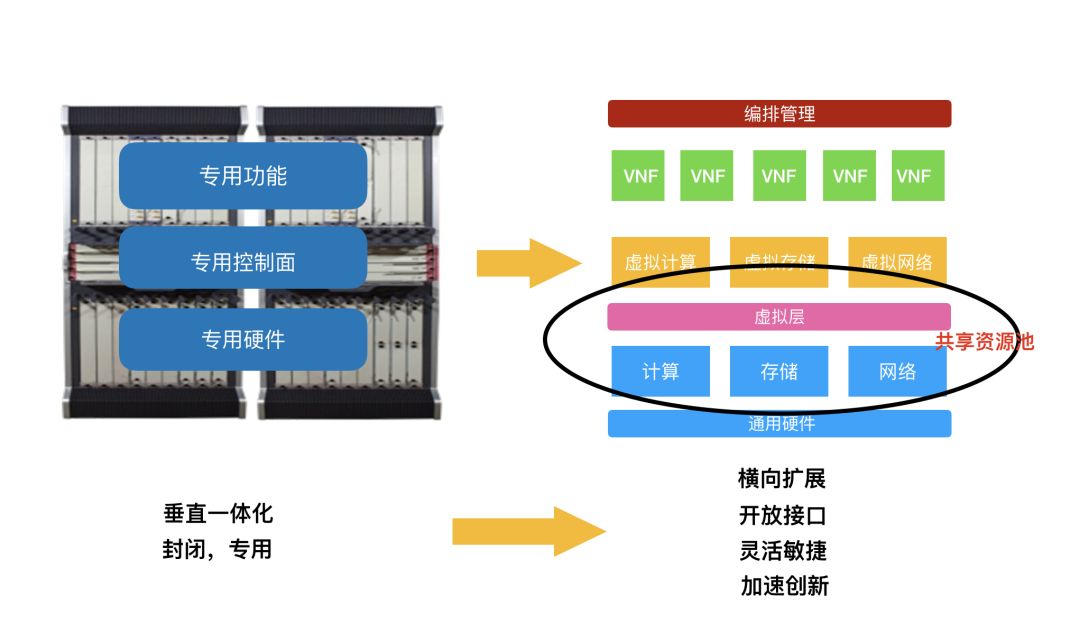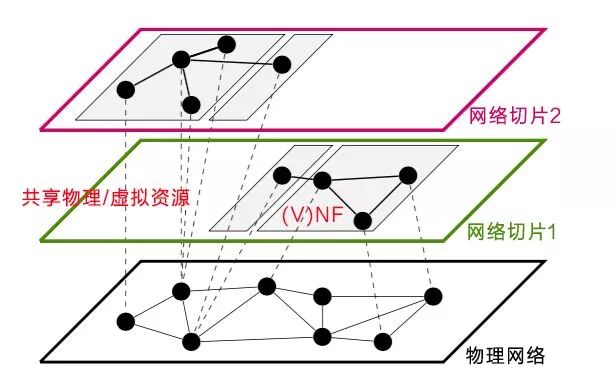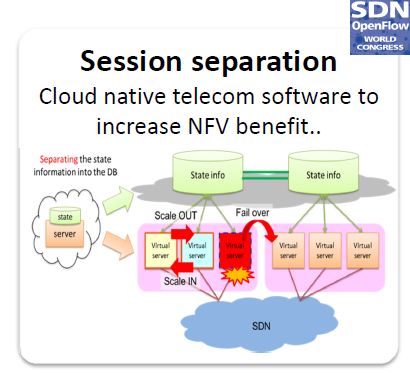【Summary】The story began in October 2012, when 12 operators including AT&T, British Telecom, China Mobile, and Deutsche Telekom jointly released an NFV white paper.

| Technology | Discussion |
The first self-media in the Chinese telecommunications industry

Author of this article:Network Optimization Mercenary
Source: Network Optimization Mercenary (hr_opt)
Submission email for discussions: [email protected]
It has been six years since our love, oh no, our NFV.
The story began in October 2012, when 12 operators including AT&T, British Telecom, China Mobile, and Deutsche Telekom jointly released an NFV white paper.
The story goes like this…
From DSL to FTTH, from 2G to 4G, traditional dedicated telecom equipment has a single function, with hardware and software tightly integrated in a closed vertical manner. After each network upgrade, various new and old dedicated devices stack up, making the network increasingly complex, data center space tighter, and CAPEX and OPEX costs continuously rising. Moreover, managing these dedicated devices heavily relies on the technical support of equipment vendors, leaving operators feeling “tied down”.
Thus, these 12 operators decided to borrow standard virtualization technology, which has been used in enterprise IT systems, and proposed the concept of NFV.
NFV, or Network Function Virtualization, fundamentally aims to decouple network functions from traditional dedicated hardware devices, allowing network function software to run on general-purpose servers, storage, and switching hardware.

Through NFV, not only can software functions flexibly flow between general hardware resources, but these general devices can also be deployed anywhere in the network, thus freeing operators from the constraints of traditional dedicated telecom equipment, leveraging the economies of scale of general hardware to reduce costs, and enhancing network elasticity and programmability for agile deployment of new services.
Since then, NFV was born, like a superhero ready to save operators from peril.
With the backing of heavyweight operators, NFV quickly became a buzzword in the telecom industry, and the industry soon launched virtualization products, with a few leading operators even announcing early applications, tantalizing their peers.
However, the subsequent development of NFV did not proceed smoothly, and there were voices in the industry claiming that “NFV has fallen”.
Is the ideal too beautiful while the reality is stark? Has NFV really “fallen” after six years?
Has NFV fallen? It will not fall.
As with the birth of any new thing, there are always skeptical eyes and even opposing voices, and NFV’s path forward has been no different.
Can it guarantee telecom-grade performance and reliability? Is it too complex? Can it really save costs? A series of questions have been thrown at it.
These doubts are reasonable, but they do not equate to facts.
Can NFV guarantee telecom-grade performance and reliability?
Traditional telecom equipment uses dedicated chips, with hardware and software optimized together, and has proven its performance over decades of continuous optimization and testing. Now, running VNF (Virtual Network Function) on general-purpose x86 COTS servers raises concerns: when network traffic surges, can these general devices be relied upon for performance?
The telecom industry has always placed a high emphasis on service quality, requiring higher reliability and availability than enterprise IT systems, and general hardware tends to have a higher failure rate. Can NFV guarantee telecom-grade reliability?
We must first acknowledge:
In terms of performance, if we compare general hardware and dedicated hardware alone, general hardware will lose. Through industry efforts, today the basic capabilities on the control plane have reached or even exceeded the processing speed of traditional control planes, but for future 5G eMBB scenarios, where user plane throughput can reach dozens of Gbps, the processing capacity of general hardware may indeed encounter bottlenecks.
In terms of reliability, the higher failure rate of general hardware does pose challenges for ensuring continuous and reliable service quality for telecom operations.
However, it seems that we may have jumped to the conclusion that “it will lose” simply because we are accustomed to traditional telecom thinking.
Let us not forget that NFV has three key capabilities: distributed infrastructure, redundancy, and self-healing, which can achieve higher reliability than traditional deployment methods.
In terms of reliability, NFV supports multi-point and active-active configurations, sharing geographically distributed pooled resources, enabling the construction of distributed rapid self-healing and disaster recovery capabilities, thus addressing the challenge of the higher failure rate of general hardware and achieving high reliability independent of infrastructure.
As the saying goes, achieving two nines of reliability relies on luck, three nines on manpower, and anything above three nines exceeds human capability, testing the self-healing ability of the business and the architecture design for disaster recovery and fault tolerance. It seems that to meet the future telecom business’s reliability requirements of five nines to nine nines, such as in scenarios like autonomous driving and remote surgery, we still need to rely on NFV.
For example, traditional typical disaster recovery solutions with “two sites and three centers” have primary-backup relationships and priority differences, which essentially represent a simple stacking of resources, making it difficult to ensure the continuity and high availability of telecom-grade services. In contrast, the distributed multi-point active-active redundancy and rapid self-healing capabilities under the NFV architecture not only allow users to experience “no perception of failure” but also enable more efficient resource scheduling, enhancing resource utilization.
Imagine, under traditional telecom architecture, a failure in a core network element could lead to millions of people being unable to communicate. How important is the NFV distributed infrastructure architecture for ensuring higher reliability in future 5G services?
In fact, the industry has reached a consensus that NFV’s introduction of stateless design and multi-point active-active redundancy capabilities can bring higher reliability to operators.
Is NFV too complex?
The answer is yes.
NFV disassembles traditional telecom equipment and reorganizes its functions, resulting in numerous components that are unfortunately not plug-and-play. Integrating components from different vendors and ensuring optimal collaboration will inevitably increase complexity, and integrating open-source software will add to that complexity.
Unlike 3GPP, the world of NFV lacks unified standards; there are various standards organizations, open-source projects, vendors, and operators, leading to challenges of technological fragmentation.
But there are always two sides to a coin.
Consider this: traditional telecom relied on a single set of generic technical specifications or solutions to meet all operators’ needs and scenarios. However, the future 5G era is one of diverse services, and each operator’s business deployment is different. If we rely on traditional “unified templates,” how can operators achieve differentiated competition?
In the traditional telecom model, it takes months or even years from standardization to implementation to launching services. This method has proven to be too slow, and operators now need a more agile approach.
The complexity of NFV is an inevitable hurdle for the telecom industry to advance towards flexibility and agility; should we retreat at the first sign of difficulty?
Can NFV really save costs?
You may not know how much NFV will cost. Can general hardware really save significant costs? Traditional telecom equipment has a lifecycle of at least 10 years, while general hardware is replaced every three years. Will the subsequent software and operational costs be higher? Soft costs are difficult to quantify, right?
Although NFV was initially created to save money, the future remains uncertain, and time will tell.
Whether it saves money is hard to conclude, but one thing is certain: without NFV, it will be difficult for operators to make a profit in the future.
Without NFV, there is no network slicing; without network slicing, how can operators enable diverse services? How can they engage in B2B? How can they seize new 5G business opportunities?
Without NFV, there is no network automation; without network automation, how can operators reduce the ever-increasing operational costs?
Has NFV fallen? It cannot fall.
Why can NFV not fall? The bottom line is: without NFV, there is no 5G.
Without NFV, 5G can only be called 5G NR, a larger version of 4G. What can NFV bring to 5G?
NFV is the “raw material” for network slicing.
5G aims to serve various industries and enable diverse services, with network slicing as the core technology, and NFV as the “raw material” for network slicing. Network slicing divides a physical network into multiple logical sub-networks, each providing different services, and these services are created through NFV and SDN using shared physical/virtual resource pools.

NFV enables high efficiency and agility in network elasticity.
NFV has taken the first step in decoupling software and hardware, transforming PNF (Physical Network Function) into VNF (Virtual Network Function). The next step is to migrate VNF to a cloud-native application architecture, further decomposing and fine-graining VNF, enhancing business deployment agility and elasticity through software modularization, lightweighting, and integration simplification, thereby shortening the time to market for services to adapt to the rapidly changing market environment of the 5G era and uncover new business opportunities for revenue growth.
Helping operators move towards automation and digital transformation.
For most operators, introducing NFV is a gradual process; virtualization (from hardware to software) is just the first step. The ultimate goal is full automation of service provisioning and self-healing, achieving Zero Touch management.
Facing the brutal competition from internet players.
The lessons from the 4G era are profound; internet players have taken the cake from operators by adopting virtualized IT architectures in a more agile and efficient manner. Unless operators use similar technologies, it will be difficult for them to stand firm in a fiercely competitive environment.
From the perspective of self-reform, operators urgently need to learn from internet players, reconstruct networks through NFV to enhance efficiency, stimulate innovation, and transition from CAPEX to OPEX models.
What’s next? Architecture, architecture, architecture.
Since the release of the NFV white paper by 12 operators in 2012, five years later, as the industry stands at the cusp of 5G, a new version of the NFV white paper, “NFV White Paper 5G,” supported by 23 leading operators, has been released.
Unlike the 2012 version, this NFV 5G white paper not only focuses on network virtualization itself but also emphasizes 5G applications and introduces the concept of Cloud Native, drawing on the microservices architecture from the IT field to further fine-grain VNF for more agile deployment of 5G services. 3GPP has defined the 5G core network based on cloud-native design.
Cloud Native, native to the cloud, is a method of building, testing, deploying, and running software that fully leverages the advantages of cloud environments, requiring us to design the software infrastructure from the outset.
A good architecture can ensure telecom-grade performance and reliability for NFV, better manage network complexity, and build robust, elastic, efficient, and agile networks to meet the diverse business demands of the 5G era.
NFV is a world about software, and architecture is crucial in the software domain. It is not an exaggeration to say that the software architecture will directly determine the success or failure of future telecom businesses.
We see that leading operators from overseas century-old companies have already made deep demands on architecture (as shown in the figure below) to build a robust, elastic, efficient, and agile network layer by layer using good architecture.

Source: https://www.sdnlab.com/18230.html
Robust architecture
Robustness means fully leveraging the three key capabilities of NFV: distributed infrastructure, redundancy, and self-healing, to achieve higher performance and reliability than traditional deployment methods.
This point has been discussed at the beginning; doubts about robustness are a thing of the past.
A robust network is the foundation; once the foundation is solid, the next step is to design the network’s elasticity, efficiency, and agility to meet the diverse business era of 5G.
Elastic and efficient architecture
Cross-regional shared resource pools, stateless design, separation of control and user planes, and on-demand auto-scaling under MANO management enable VNF network functions and services to flow flexibly between resources and allocate resources based on business types, thus constructing a business-aware elastic network that flexibly and efficiently responds to 5G network slicing, ultimately maximizing the return on investment for operators.
Agile architecture
Microservices architecture allows network functions to be flexibly assembled, supporting rapid service release and on-demand launch, while gray release enables new functional features to be upgraded online, and MANO autonomous management can achieve automatic service launch… thus achieving agile responses to diverse business demands.
Under a good architecture, robustness is the foundation, while elasticity, efficiency, and agility are the tools for operators to maximize commercial value in the 5G era. In short, when we discuss the essence of architecture, we are actually exploring how to orderly introduce key technologies based on a well-designed robust architecture to further achieve elasticity, efficiency, and agility, smoothly transitioning to the 5G path and maximizing operators’ commercial value.
NFV will not fall, nor can it fall. In my opinion, the real challenge of NFV does not lie in technology; technical issues can always be overcome. The real challenge of NFV is the telecom industry itself. Accompanying NFV is a brand new IT environment and culture, which requires operators to undergo proactive changes in organizational structure, cultural mindset, and skill sets. Self-transformation is always difficult and even painful; without strong top-level guidance and a resolute determination to make sacrifices, it is challenging to achieve.
This transformation will have significant impacts on traditional operational models. For instance, can gray upgrades allow traditional telecom personnel to escape the grueling nights of upgrades and cutovers? We will continue to explore this in the next issue.
Recent Hot Articles
After half a year of transformation, this Alibaba-affiliated company has finally “emerged as a giant.”
NB-IoT vs. LoRa: A battle with a predetermined outcome?
A comprehensive analysis of the merger between China Telecom and China Unicom.
Why does autonomous driving need 5G?
Please restore the dignity and confidence of the telecom industry.
2G, hard to say goodbye! The “nail household” makes the retirement path exceptionally long.
 Technology Discussion: keji_zatanLong press the QR codeFollow Technology Discussion
Technology Discussion: keji_zatanLong press the QR codeFollow Technology Discussion


2013 Best IT Original Self-Media
2014 Best New Media Person
2014 Most Concerned Self-Media by Enterprises
2016 T+ Self-Media Insight Star
| New Technology | Insightful Thoughts |
Has settled in Baidu Baijia, Tencent News, Sohu News, Toutiao, NetEase Reading
Yidian Zixun, Internet Laboratory, Beijing Time, etc.
Member of the Rhino Finance Self-Media Alliance (xinews)
WeMedia member
For reprint authorization and business cooperation, contact WeChat ID:sophie0306
